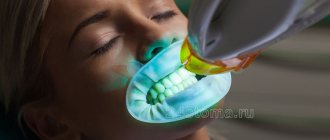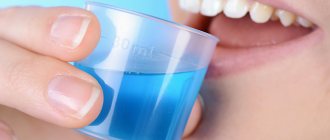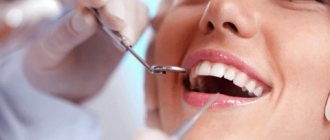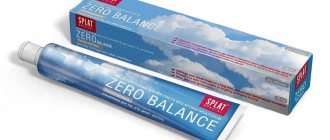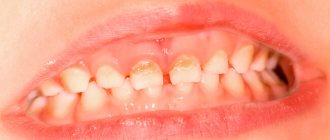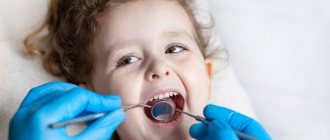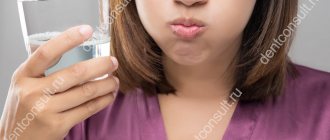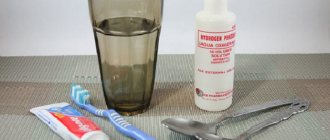Oral hygiene is an important component of the health of the whole body. Many people neglect brushing their teeth twice a day, carrying out this procedure only in the morning. However, professional dentists say: in order to prevent caries and protect the oral cavity from the growth of harmful bacteria, it is necessary not only to brush your teeth twice a day, but also to do it correctly. Let's Let's look at a few basic points in the process of brushing your teeth that will help you keep your mouth clean and keep your teeth and gums healthy.
How many times a day should you brush your teeth?
As we noted earlier, you need to brush your teeth at least twice a day - in the morning and before bed. Professional dentists recommend paying more attention to the evening procedure.
Brushing your teeth before bed is necessary to prevent tooth decay: the food you eat during the day settles on your teeth in the form of plaque and at night promotes the proliferation of harmful bacteria. This can lead to gum inflammation and tooth decay.
The morning routine of brushing your teeth can be done before or after breakfast. However, if you have eaten juice or fruit, you should wait an hour before brushing your teeth. The acid contained in these products softens the enamel and you risk “cleaning out” useful minerals from it.
Toothbrush hardness
The stiffness of the brush is determined by the diameter of the fiber - the larger it is, the stiffer the brush will be. Nowadays, manufacturers often indicate the degree of hardness on packaging: very soft (ultra soft, extra soft), soft (soft), medium (medium), hard and very hard (hard).
Very soft brushes are suitable for children under 5 years old and people with sensitive teeth. Soft brushes - for children from 5 to 12 years old, as well as for severe pain in the teeth and gums. Medium hardness brushes are suitable for children over 12 years old and adults.
Hard and very hard brushes are not recommended for use without consulting a doctor. Such brushes can injure the gums and cause abrasion of the hard tissues of the teeth.
How is the procedure done?
Comprehensive teeth cleaning can be divided into 4 stages:
- The doctor removes tartar using an ultrasonic device. The water pressure cools the treated area of the mouth, reducing possible discomfort. At this stage, the enamel is cleaned superficially.
- The specialist uses a sandblaster to blast the teeth. It removes pigmentation, plaque and soft deposits, while simultaneously polishing the enamel. The method makes teeth smooth and returns their natural color.
- Using abrasive pastes, the doctor polishes the teeth. The technology allows you to grind even fillings. The abrasive for each person is selected individually. Polishing makes the enamel shiny and smooth, reducing the likelihood of caries.
- To strengthen the enamel and reduce its sensitivity, the specialist coats it with fluoride varnish. The resulting film lasts about a week, allowing you to consolidate the resulting effect.
Does it hurt?
Pain and sensitivity are individual sensations. No one can say with certainty that the patient will not experience pain during hygienic teeth cleaning. If the enamel is thin, or dentin is exposed in some areas, then through the tubules in the hard tissue of the tooth, unpleasant sensations are transmitted to its nerve. If the patient has healthy and strong units, there will be no discomfort during the procedure.
In terms of painlessness, laser cleaning takes first place. Before it is performed, the gums are protected with special devices.
Discomfort may also occur after the procedure, since some techniques are aimed at removing subgingival deposits located deep under the soft tissues.
Abrasiveness of toothpaste
Abrasiveness is considered an indicator of the ability of toothpaste to disrupt the structure of enamel and dentin due to abrasion.
The abrasive substances in the paste are responsible for this indicator: silicon compounds, silicon dioxide, hydrated silicon dioxide, or calcium carbonate and calcium phosphate compounds.
A high degree of abrasiveness, although it contributes to high cleaning power, but at the same time causes more damage to tooth enamel. There are 4 levels of toothpaste abrasiveness:
- Low level of abrasiveness - RDA 0-70. Recommended for children and adolescents up to 12-14 years old and adults with hypersensitivity of teeth and gums. For children under 6-7 years of age, an abrasiveness of up to 40 is more suitable. Such pastes have minimal impact on tooth enamel and dentin.
- The average level of abrasiveness is RDA 70-100. This level of abrasiveness is suitable for children from 14 years of age for daily brushing of teeth. Such pastes help maintain the natural color of teeth after professional cleaning and whitening. If you have increased sensitivity of your teeth and gums, it is better to use pastes with low abrasiveness.
- High level of abrasiveness - RDA 100-150. Recommended for people over 14 years old. If you often drink tea, coffee drinks, or tobacco, then periodic use of highly abrasive paste is also suitable for you. When used occasionally and alternating with a paste of medium abrasiveness, it cleans well and does not seriously injure the enamel.
- Very high level of abrasiveness - RDA above 150. Dentists do not recommend using such pastes frequently, as they can cause serious damage to the enamel. Only a specialist can prescribe high abrasive pastes. You must brush your teeth strictly following your doctor's recommendations.
Harm of professional cleaning: myth and reality
Ultrasonic cleaning is harmful to teeth and destroys them
Some patients who come to the dentist for the first time for prof. hygiene, after removing hard dental deposits (tartar), sensitivity appears, and the patient perceives this fact as harm. In fact, this is far from the case.
Reality. As a rule, enamel hypersensitivity after ultrasonic teeth cleaning occurs in people with heavy dental plaque. This happens because the tooth enamel, which has been under a layer of dental plaque for a long time, is demineralized, i.e. loses calcium, potassium, fluorine, magnesium and other micronutrients that normally enter the tooth tissue from saliva. When a tooth is covered with tartar and plaque, the enamel suffers and, as a result, caries develops, not to mention gum inflammation.
Thus, when tartar is removed with an ultrasonic attachment, the enamel is released and naturally reacts to any external irritations (cold, sweet, sour), of course, if there is no caries in the oral cavity. Over time, the tooth will receive all the nutrients from saliva and the sensitivity will go away. And when special pastes are prescribed to reduce sensitivity, this process will be reduced significantly. In our practice, our specialists use the thinnest ultrasonic nozzles from leading German manufacturers with minimal power and maximum water supply, which significantly reduces any discomfort during the procedure.
The powder used for cleaning spoils the enamel and causes tooth sensitivity.
Reality. Microbial and pigmented plaque is harmful to teeth and gums, which turns into tartar if hygiene is poor. Brushing your teeth with a special powder (or an air-abrasive method) can remove plaque in the most inaccessible places where a toothbrush is ineffective. Until recently, this procedure used sodium-based powder, and patients experienced an unpleasant taste of soda in the mouth, which irritated the gums and oral cavity. Now we do not use such powder in our practice. Teeth are cleaned of plaque and food colorings using the PROPHYflex device. This technology uses KaVoPROPHYpearls powder. It's not even a powder, but a special calcium-based powder. Its particles are much smaller than sodium and have a rounded shape, which makes it possible to clean the tooth surface as safely as possible without damaging the enamel and gums.
Dental coatings containing fluoride are harmful to the body
Reality. In dentistry, fluoride is used in the form of applications that are applied to the enamel.
It does not have a negative effect on the condition of the body as a whole. Fluoride is one of the main components of enamel and its lack can lead to weakening of tooth enamel. Fluoride enters the body and tooth enamel from water and food. After professional hygiene, coating the enamel with fluoride and calcium is a mandatory component of this procedure, since the pellicle, the protective film of the tooth, is removed along with dental plaque; it forms 2 hours after the procedure. Therefore, it is important to cover your teeth with special coatings after brushing. And it is not recommended to eat within 2 hours after the procedure. The doctor's consultation
Alternative remedies
To more effectively clean the mouth, in addition to a toothbrush, you should use alternative cleaning products:
- Dental floss. Allows you to remove food debris in the space between the teeth, where a regular brush is not so effective. You need to use dental floss carefully so as not to damage the soft tissue. Under no circumstances should you try to replace dental floss with regular threads - they have a completely different structure and do not have an antiseptic coating.
- Interdental brushes: These brushes are best suited for large, irregular or concave tooth surfaces. To achieve the best result, the diameter of the brush should be larger than the space between the teeth.
- Toothpicks. Small wooden sticks that allow you to get rid of food debris between your teeth. You should also be careful with toothpicks so as not to damage soft tissue.
- Irrigators. A device for cleaning the space between teeth and at the junction of tooth and gum. The irrigator nozzle delivers a stream of water under a pressure of 0.7 - 4.8 bar - this allows you to wash away food debris and remove soft plaque from the surface of the teeth, gums, and oral mucosa.
How does plaque appear on the tongue?
Let's figure it out from the very beginning - the structure of the body. The tongue is your muscular organ that has a mucous membrane. The structure of the surface of the tongue determines how many bacteria will appear on it. These bacteria, in turn, are the cause of plaque and odor. As is correct, less plaque accumulates on the tip of the tongue because the tip of the tongue is cleaned using natural movement in the oral cavity. The back of the tongue is less mobile. Compared to the anterior one, it only comes into contact with the palate. It is also cleaned less thoroughly by the patient. Therefore, the plaque there is thicker. The reasons for the appearance of plaque on the tongue are obvious:
- Excessive alcohol consumption;
- tobacco and smoking;
- coloring matter from products;
- delay in treating infections;
- chronic diseases;
- stomach problems.
Proper Teeth Brushing Technique
High-quality and safe teeth cleaning includes 4 main processes:
- cleaning the outside of the teeth with sweeping movements from top to bottom;
- brushing the inside of the teeth with vertical movements using the tip of the brush;
- Clean the chewing surface of your teeth using back and forth movements;
- massage your gums by closing your jaw and making circular movements along the surface of your teeth.
After completing the main procedures, use dental floss or another means to clean the space between the teeth.
Which brush to use
As we found out earlier, you should choose a toothbrush based on the sensitivity of your teeth. Dentists recommend using brushes with low or medium hardness.
Stiffer brushes can only be used as prescribed by a specialist and all recommendations are followed. Otherwise, you may damage the surface of your teeth and soft tissues.
Electric toothbrushes are not as effective as they might seem. They do not sufficiently clean the surface of the tooth and drive food debris into the space between the tooth and gum. It is better to opt for a regular brush with a hardness that suits you.
What paste to use
According to GOST, toothpastes are divided into hygienic and therapeutic and prophylactic. Hygienic pastes are designed for mechanical cleansing, removing food debris and plaque from enamel. Therapeutic and prophylactic products are intended for the prevention of oral diseases. Such pastes have an antiseptic and anti-inflammatory effect.
Rospotrebnadzor identifies 4 types of toothpastes:
- with fluoride content - reduce the risk of developing caries and demineralization of enamel;
- with triclosan - have an anti-inflammatory effect in gum diseases;
- having a whitening effect - help in the fight against dark plaque;
- with an anesthetic effect - reduces the increased sensitivity of teeth to sour, hot and cold.
How long to brush your teeth
To achieve the best results when brushing your teeth, you must not only adhere to the correct technique, but also brush your teeth for a certain amount of time. Professional dentists say that the most optimal time for brushing the oral cavity is 2 minutes - 30 seconds for each half of the upper and lower jaw.
By following all these recommendations, you can easily achieve oral health and visit the dentist less often, only for prevention and professional cleaning.
Choosing the appropriate professional hygiene method
Which is better: ultrasonic cleaning or Air Flow? Having compared the advantages and disadvantages of both methods, it is impossible not to mention the frequency of their potential use. Ultrasound can be used once every six months, but the effect of such exposure is more long-term and noticeable. Air Flow is recommended for use every 3 months. The duration of work in both cases is about half an hour. However, the difference in the cost of the procedures is small.
When making a choice at the dentist's office, it is important to understand what goals you are pursuing. If the main task is to remove pigment, traces of dyes and light deposits, it is enough to use Air Flow. In a situation where a more thorough approach is needed - removal of tartar, prevention of caries and dental diseases, it is better to give preference to ultrasound exposure.
Regular oral and dental care will reduce the cost of treating diseases, so do not neglect professional hygiene procedures.
